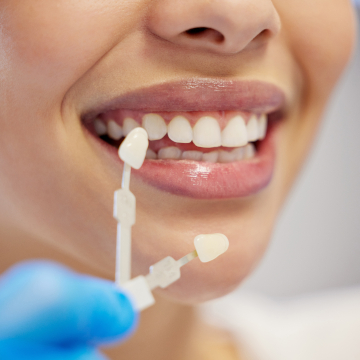 Santa Cruz, Scotts Valley CA
Santa Cruz, Scotts Valley CA
Millions of Americans suffer from obstructive sleep apnea (OSA), and some don’t even realize it. If your bed partner complains that you snore or gasp for air at night, you may have OSA. Today, our sleep apnea dentist in Santa Cruz is explaining what sleep apnea is, and we’re diving into the symptoms, risk factors, diagnosis and treatment of this common but dangerous sleep-breathing disorder. Let’s get started …
What is obstructive sleep apnea?
OSA is a sleep-breathing disorder characterized by loud snoring and repeated pauses in breathing at night. When we sleep, the muscles in our throats relax, and throat tissue can obstruct our airways. The brain responds to breathing pauses by startling the sleeper awake to breathe. These incidents can occur 100 or more times a night in the most severe cases. And while the disruptions usually can’t be recalled the following day, the damage has already been done: The sleep cycle has been repeatedly interrupted during the night, oftentimes leading to severe daytime fatigue and a decrease in focus and mental performance.
According to some studies, the lack of oxygen a body receives because of undiagnosed and untreated sleep apnea can also increase the risk of developing high blood pressure, heart disease, stroke, diabetes, depression and anxiety.
What are the symptoms of sleep apnea?
The most common symptoms of sleep apnea include:
- Snoring — Chronic, loud snoring is the most common symptom of OSA, occurring when air struggles to pass through the airway and causes the throat tissue to vibrate.
- Breathing pauses — Relaxed throat muscles while sleeping can cause the airway to become obstructed. This results in repeated pauses in breathing through the night, cutting oxygen from the brain for a few seconds and up to a minute or longer.
- Excessive daytime fatigue — Snoring and pauses in breathing disrupt the sleep cycle, preventing a person from receiving restorative sleep. This can lead to a lack of energy, irritability and difficulty concentrating during the day. It can also eventually lead to depression and anxiety.
- Morning headaches — Oxygen deprivation during the night causes sleep apnea sufferers to frequently wake up with headaches that are often mistaken for tension headaches.
- Fragmented sleep — A person doesn’t necessarily remember waking up frequently during the night, but repeated disruptions to the sleep cycle will leave him or her feeling unrested no matter how many hours were spent in bed.
What are the risk factors for sleep apnea?
While sleep apnea can affect anyone for various reasons, the most common risk factors that our sleep apnea dentist in Scotts Valley sees include:
- Obesity — Excess weight, especially around the throat or neck, increases the chance of airway obstruction during sleep.
- Age — With age, muscle tone decreases and the risk of weight gain increases. The onset of sleep apnea is most likely to occur between young adulthood and middle age.
- Gender — Sleep apnea is more common in men than women. The risk for sleep apnea in women increases with menopause.
- Anatomical features — Structural abnormalities such as a deviated septum, enlarged tonsils and/or a narrow airway can contribute to airway obstruction during sleep.
- Genetics — If family members have sleep apnea, it increases the odds that offspring will also have it.
How is OSA diagnosed?
Usually, the first person to become aware of a case of sleep apnea is a bed partner. And that partner will typically complain and compel the snoring partner to seek treatment. Once in our office, our sleep apnea dentist can ask about your medical history and any symptoms you may be experiencing. After a thorough exam, if sleep apnea seems likely, our office will recommend a sleep study, either in a sleep lab or at home.
How is OSA treated?
Treatment of OSA depends on each case and its severity. Surgery is usually recommended only for the most severe cases of OSA. Sometimes simple lifestyle changes, such as weight loss and/or alcohol or tobacco cessation, can help with symptoms of OSA. And while many healthcare providers immediately suggest a continuous positive airway pressure (CPAP) machine to keep the airway open at night, our dentist has found that a less cumbersome treatment boasts similar success …
Oral appliance therapy
Oral appliances — also commonly called mouthguards or nightguards — are custom-fabricated, comfortable clear plastic trays that a patient wears during sleep. The trays reposition the jaw and tongue to prevent the airway from collapsing during sleep. These devices are successful at treating mild to moderate cases of OSA.
SLEEP APNEA TREATMENT IN SCOTTS VALLEY, SANTA CRUZ, AND LOS GATOS, CALIFORNIA
OSA is a common but dangerous disorder, carrying serious risks to a person’s overall health and well-being. Many people are unaware that dentists like ours at Ebrahimian Integrative Dentistry can diagnose and manage OSA through a simple oral appliance available in our office. If you feel the quality of your sleep is being compromised, or if you know you’re a chronic snorer, give our office a call at (831) 824-5111 or reach out to us online to schedule a consultation today.



